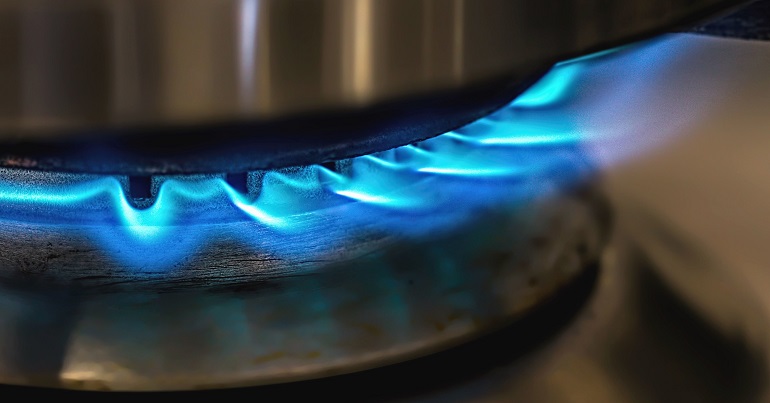Energy bills: Will they stay high forever?

Why are energy prices so high? That was a question that crossed the lips of many of us over the last year – often shortly after receiving an bill. The answer, as covered, in earlier Bright Green articles is a combination of unpredicted war and predicted policy mistakes. The questions being asked this winter are a combination of how am I going to pay this and will prices stay this high forever?
Headlines this summer have been full of record news about prices falling followed by news about gas prices surging. This is a feature rather than a bug of a new reality that will be with us until our leaders make the choices to get us out. To explain, here are two reasons why power prices may fall and three why they may not.
-
Prices will fall as renewables makes power generation cheaper,
Last month, day ahead power prices turned negative across Europe, as variable low cost energy (solar and wind) poured onto the grid with low summer demand. This is a less substantial version of what happened in April 2020 and is likely to become more frequent as a result of the turbocharging of renewables following the invasion of Ukraine. Alongside this, slowly expanding interconnection and increasing energy efficiency should drag power prices down over the long term. In the short term…
-
Power prices will fall because gas prices are falling
For most of the year, gas prices still play the role of setting energy prices across the EU and UK. In late 2020, floods in China took out its coal mines, forcing coal to gas switching, thus driving up gas prices. Russian tanks then crossed into Ukraine and OPEC cut production, turbocharging prices to records. This came at a time of drought, switching off European hydropower and problems in the French nuclear fleet, sending electricity prices soaring.
However, as previously covered in Bright Green, through policy, luck and displacing the cost onto former colonies the west then did comparatively well. Gas was probably slightly overpriced compared to demand. Now – with the French nuclear fleet operating, chances of higher hydro output, increased EU capacity to import, stored gas and more renewables – gas demand looks lower. At the same time the terrible economic data coming out of China suggests depressed demand in the Asia Pacific. This has led to a large number of forecasts predicting gas prices will fall.
This is reflected in Cornwall Insight’s unnervingly accurate prediction of future UK Energy prices caps suggesting prices in October would fall another 7% (putting unit prices 40% on peak). However, this still leaves both around double the level of three years ago and they are likely to stay there.
-
Power prices will rise as the electricity system is not getting any cheaper
Electricity prices are not getting cheaper. Over the last decade even as more renewables have entered onto the UK system prices have continued to rise. This is partially as variable renewables entering an electric system built mainly for large firm generation imposes costs (still less than that of nuclear, gas or coal). About two decades worth of modelling suggests that this cost would be avoidable and indeed turn into a benefit with changes to grid regulations and little storage and infrastructure investment. However, the government decided not to do this. They have also declined to back rooftop solar, energy efficiency or onshore wind, which in 2021 would have reduced prices by £60 per per household in 2020.
In the long term as heating and transport are electrified, the questionable nature of government planning and the slow build out of the power system will likely to lead to price spikes even if the underlying cost of the power falls.
At the same time the UK has adopted a couple of things which inflate the energy bills. In the first case it has depended on legacy nuclear without building sufficiently to replace them. UK nuclear is now reaching the end of it’s generating life and if it is to play a role in the system, new nuclear will need to be built. Whatever the environmental arguments this remains the most expensive way to generate power and the latest government plans suggest consumers will be paying for the new generation before they generate. The second, is the harder to quantify profit drain from the sector as privatised generators and network operators deliver consistent shareholder profits.
Energy bills still reflect the cost of bailing out energy suppliers in 2022 as energy prices first surged. However, the main reason they are higher than they were a decade ago is it costs more to use a unit of electricity than it did a decade ago as the gas price is higher than it was then.
-
Power prices will rise as gas prices rise
This may seem a contradiction to point 2, but last week there was a panic in the gas markets worldwide sparked by industrial action in Australia. This raised gas prices to the level they were at at the start of the summer. More than the price level, it illustrated something important. Gas is a global commodity with long supply chains in an increasingly unstable world that are incredible vulnerable to climate risk. This alone would drive price fluctuations.
More critically, gas is in long term decline, even the most pessimistic forecasts acknowledge this, Any investment into the sector is both risky and more costly than it was two decades ago. A result of this are concerns about the tanker fleet, old plants and continual fears about supply mismatching with demand. This as demonstrated by Carbon Tracker and is likely to lead to price fluctuations, even without climate induced instability.
These price fluctuations are costly for power systems dependent on gas. As long as we make the choice to depend on gas then power will remain pricy.
-
Governments are choosing to keep prices high
None of this is particularly new or original (apologies to those who read the last 1000) words. It is pretty much accepted by the government at least in theory. There are multiple blueprints of how to lead to a lower carbon system and pretty much all of them agree that it would lead to lower power costs at least over the medium term. Across the Channel, France has been able to constrain power prices. There are debates to be had around the exact direction, but at the moment, governments committed to constrained fiscal rules seem to have committed to a situation of near statis. In addition to the climate implications high power prices killed an estimated, 68,000 people across Europe and at the high level will do something similar next year. This is a choice made by the government – government that faces an election next year.
PS. We hope you enjoyed this article. Bright Green has got big plans for the future to publish many more articles like this. You can help make that happen. Please donate to Bright Green now donate to Bright Green now.




Leave a Reply